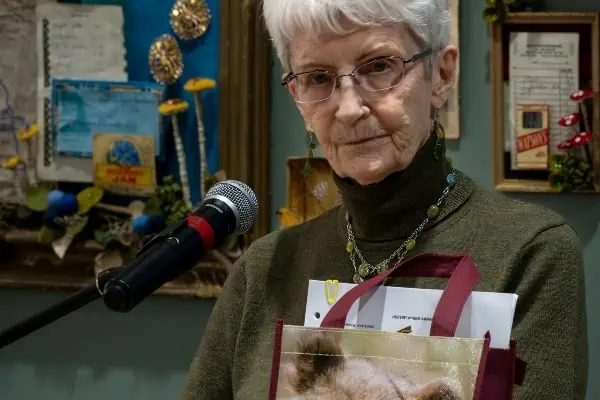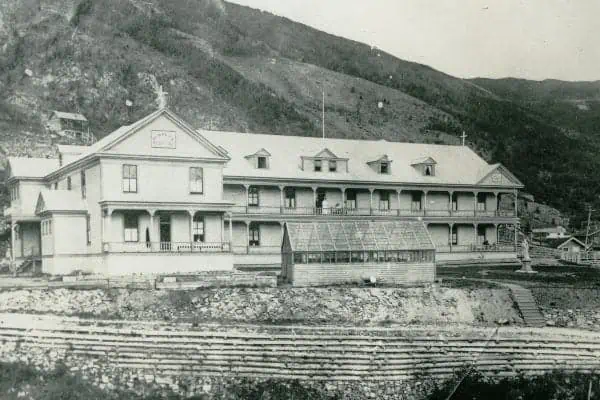Bear Creek Compound is owned by Parks Canada now, but it was once the thriving centre of operations for the Yukon Consolidated Gold Corporation (YCGC), and it’s safe to say that Dawson would not have survived as long as it has if YCGC had not been mining he creeks up until 1966.
One of the keynote features of this year’s Riverside Arts Festival was Sarah Fuller, who presented her project for The Natural and the Manufactured series called “The Homecoming.” Large-scale photographs of Bear Creek buildings, many of which still exist in Dawson, were mounted in what would have been their original locations in the settlement, which was made up of a mixture of residential and industrial buildings during its six-decade existence. Each “building” was fronted with signage to give its history and connection to the settlement.
There isn’t a really good popular history of Bear Creek yet, but if you want to see how it fit into the overall YCGC strategy, there is Lewis Green’s somewhat dry account in The Gold Hustlers (Alaska Northwest Books, 1977). This is a hard book to find, as I discovered after I loaned my copy to Pierre Berton when he was researching Prisoners of the North, his last book. My copy fell apart and Berton sent me the money to replace it, which took me a few months.
The book is more about the business end of things than about the lifestyle, but there are lots of Bear Creek references in its pages.
For a discussion of the lifestyle, you can pick up Joann Robertson’s The Yukon: Life Between the Gold Rush and the Alaska Highway. Pick up the new edition from Granville Island Publishing, because it fixes all the mistakes that marred the original self-published edition a few years ago. The confusing typography is simplified and pictures are all properly inserted, free of distortion. Robertson lived in Bear Creek and several other small towns and gives a good account of what it was like there.
Set a little earlier in time is Sheldon Gebb’s In the Footsteps of My Father (Publication Consultants), in which he and his wife recreated the journeys his dad, John Wesley Gebb, undertook about 10 years after the Gold Rush. John worked for YCGC and spent some time as an engineer at the North Fork hydro dam and also in and around Bear Creek and Dawson. He kept a daily journal of his life and travels and Sheldon used that as the starting point for his continuing research over a number of years. Just this summer, he and his wife were back to give a talk at the Dawson City Museum.
Finally, I will refer to Jim Lotz’s The Gold of the Yukon (Pottersfield Press, 2012). This deals with the period right around the time when YCGC was shutting down and the federal government was excited about prospects for historic preservation and presentation in Dawson. The Palace Grand was about to be rebuilt and Lotz was the civil servant sent in to find out how people felt about that. He doesn’t dwell too much on Bear Creek, but you get a sense of the lifestyle in the area at the time that it was winding down there. This is a memoir rather than a history book, and it’s an affectionate look at an area that Lotz visited numerous times over a number of years.
After 32 years teaching in rural Yukon schools, Dan Davidson retired from that profession but continues writing about life in Dawson City.




